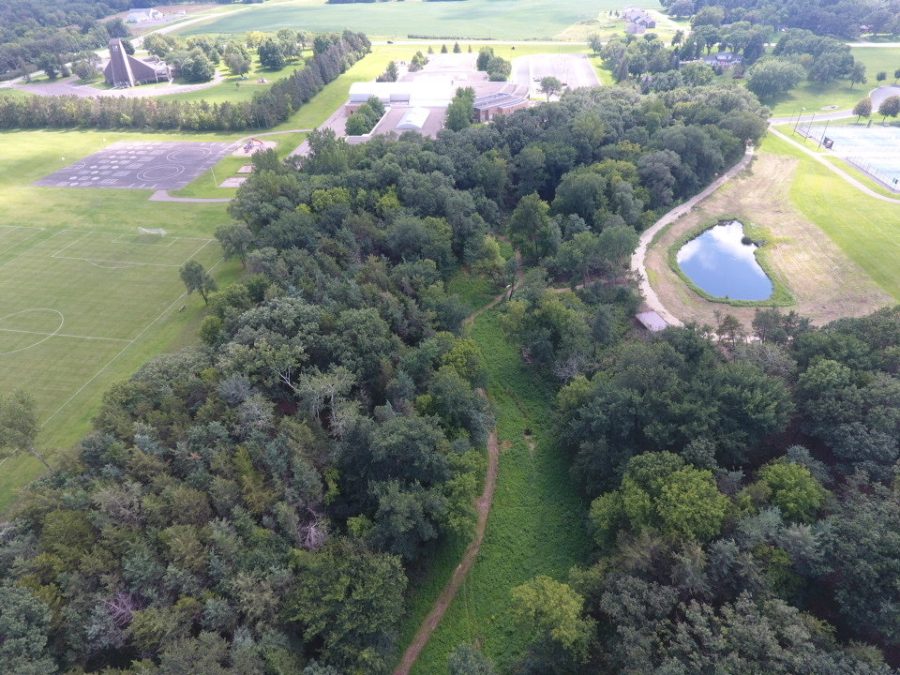Into the woods
With help from a few volunteers, the Cannon Falls School community has been able to establish a robust school forest.
The Cannon Falls school forest is large, stretching from the elementary school to the high school.
Sunlight beams down on students as they trek through the forest, searching for signs of life in the rich black soil under their feet. Led by CFHS biology teacher Amanda Thompson, these students are on the hunt for various insects, starting from the ground up as they investigate the local ecosystem’s components. By examining both biotic and abiotic factors to identify the role each component plays in the school forest, biology students are able to develop a deeper understanding of the subject they study, but this wouldn’t be possible without recent renovations to the school forest.
Stretching from the east end of Cannon Falls High School to the west end of Cannon Falls Elementary School, the school forest has long been a part of the school environment. However, after a series of tornadoes struck Cannon Falls in September of 2018, the forest quickly fell into disrepair. As Deanne Coleman, a long time librarian at CF Elementary, observed, “Like anything else, without dedicated time and resources, it became overgrown and neglected.” With trees obscuring walking paths and a rampant buckthorn issue, the school forest became plagued by a variety of issues limiting the access of both students and teachers alike.
In the spring of 2019, two Cannon Falls community members, Tim and Julie Magalis, stepped in. Farmers with a passion for the outdoors, the Magalises approached CFHS faculty with a proposition. “Both our kids went to school here but we lost our son, Ben, in November of 2000,” Julie remarked. “After we lost Ben, we were looking for a project to meld his love of the outdoors with our community. We read about the school forest in Goodhue then came to the Cannon Falls administration and talked about just planting some trees.” With strong support from teachers like Thompson and Coleman, along with the CFHS maintenance staff headed by Dave Petersen, the project snowballed. Tim expressed that “We just got really lucky. I mean, we were just going to plant a few trees, and then ended up with a big piece of property to play with. Ten acres.” The couple got to work, and with memorial money from the loss of their son, Tim and Julie established a litany of improvements in the school forest.

A committee at CFHS including superintendent Jeff Sampson, facilities director Dave Petersen, FFA advisor Duane Pliscott, elementary librarian Deanne Coleman, and STEM/Biology teacher Amanda Thompson, teamed up with the Magalises to tackle one of the forest’s most pressing concerns: overgrown trails. Recycling old wood chips from the elementary school playground, along with extra gravel courtesy of the Magalises, Petersen and his team reestablished the trails, clearing away brush and tornado debris and creating designated paths to make the trails easily accessible to students once more.
Unfortunately, there was still a lot of work to be done. Buckthorn, one of Minnesota’s most problematic invasive species, had made its home in the forest, and had to be addressed lest the problematic plant spread any more. Thompson had a front-row seat to the buckthorn removal, and observed that “It’s pretty bad. When buckthorn takes over, it’s good at out-competing other native plants. Even late in the season, it’s still green and getting energy. Birds and other wildlife will eat the berries, but they don’t process them well, so they end up spreading them and it’s really hard to stay on top of the issue.” Luckily, the Magalises once more stepped up to the plate. “They have been instrumental in helping to open up these (buckthorn-infested) areas and they’ve been doing a lot of that work in their spare time,” Thompson noted.
Prairie restoration has been a priority for the Magalises as well, who contracted with Prairie Restorations to install prairie in the area surrounding the pond basin. After prepping the site and re-seeding it, Thompson and the Magalieses are hopeful that the plants will reestablish, ultimately resulting in a healthy prairie area around the pond.
At this point, Cannon Falls students were already seeing improvements due to the restoration efforts. Coleman expressed that “I began taking students to the school forest in the fall of 2020, after trails had been established by Tim and Julie Magalis and the maintenance staff. Taking the classes outside not only enhanced our learning, it gave us all a much needed break from being inside the same four walls.” Her students even got to participate in a special project, integrating the outdoors with literature. “I read Leaf Man by Lois Ehlert to my kindergarten students. The illustrations are wonderful, and the students learn a lot about the fall season, different types of leaves, and animals, and creating art through nature. Then I read the same story in the school forest. The students were surrounded by trees and could experience the story in a new way by incorporating more of their senses. They can see, feel and hear the leaves. They can collect leaves and create their own art. Students tend to be more engaged, ask better questions, and make real world connections.”
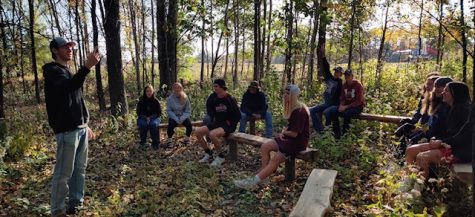
Despite the plethora of improvements though, work on the school forest continued as Tim and Julie collaborated with a local company, Johnson Logging, to create benches and outdoor discussion areas in the school forest. By repurposing fallen cedar trees, Darren Johnson aided the Magalises as they cut up the trees and combined them with pieces of telephone pole to create an outdoor space ideal for learning in the forest. Thompson and Coleman appreciate the efforts, with Coleman saying that “The forest has gone from a place I walked students through to a place with several gathering places and points of interest,” a sentiment Thomspon reflected with the assertion that “it’s like a discussion circle, but it’s really just a place to gather a class so that you can take a look at things and do more in the space.”
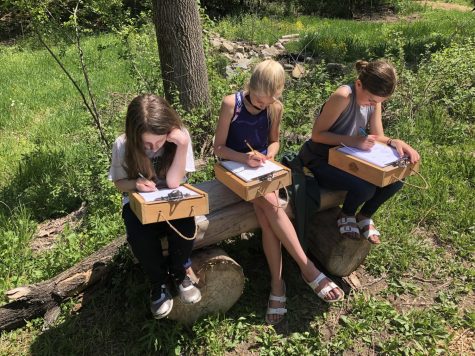
In another collaboration with locals, Tim and Julie have brought field desks to the CFHS school forest experience as well. “There’s a couple out of Rochester that donate their time every year, making field boxes. They’re like a wooden box, the top is a clipboard, and they’ve got a little handle. Anyway, they made 30 of them for a class and donated them, and they did it for five schools around the state of Minnesota, school forests. Since there was an issue here with who was going to get them and where they were going to put them, a woodworker made 30 more. Now, there’s a set for the elementary and a set for the high school,” Julie remarked.
Perhaps the most significant project, an observation deck, was completed shortly before school started this year, with its construction concluding in late August. This deck is built on a ridge, overlooking a pond on one side and a ravine on the other. Working in conjunction with a local company, Anderson Construction, the Magalises were able to finish the project just in time for Thompson to use it with her classes, and she went on to state that “It has been a nice gathering spot and observation station when taking my classes outside. I have also seen community members who are out walking in the school forest stop there as well.”
Beyond the significant improvements that have already been made, Tim, Julie, and Thompson are looking to the future with ambitious plans to create an extensive signage system and potential trail maps, making the forest more navigable for students and the CFHS public alike.
The school forest isn’t just a forest, though. The outdoor space is part of a school forest program through the Minnesota DNR. Thompson has been involved with the process, explaining that “When you apply, you’re applying to their program. They have certain qualifications, things you need to maintain and include. There’s a report every year that we’ll have to do to say how the space is being used, what we’ve done, and then we’re officially designated in the school forest program. There are resources available to us as a result.” Working with a dedicated forester, the project has thrived, making the school forest exactly what it was intended to be: an outdoor haven for learning at CFHS.
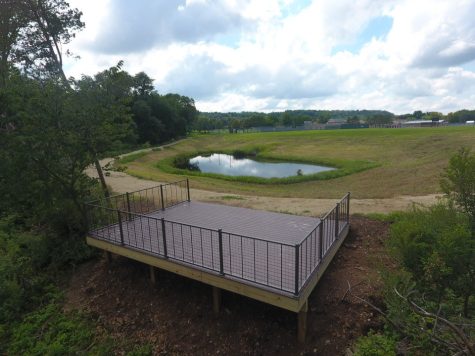
Tim and Julie are both firm believers in the benefits of time outdoors, particularly in forests. “You’re aware of your surroundings, and you’re learning about your surroundings,” Julie added. Thompson agrees, stating that “the goal is to develop observational skills and pay attention to what’s here. A lot of times I’ll have them (the students) focus on stuff that’s pretty easy to find, like wildlife signs or tree identities. To pay attention and to realize how much is here. If you’re paying attention, you will see.”
From short labs to more long-term experiments, Thompson and her students are excited to utilize the space. Already a multitude of discoveries have been made, from a fox den to puffball mushrooms and bald-faced hornets to monarch caterpillars. Rock samples and tree identification projects have been focuses for various classes, and even elementary students who are just using the forest to go for a quick hike or enjoy some outdoor reading time can appreciate the significance of the space.
“We’re trying to keep the space in the natural environment but also add amenities that are going to make it easier to bring classes out and really utilize this space for education,” Thompson stated. “You don’t want to over-build it because it’s supposed to be a natural space. Once we’ve got places for people to come, I think the other developments will be curriculum based.”
Every development in the school forest has been the result of a collective effort from teachers, school faculty, and community volunteers, especially the Magalises. “We are fortunate that the Magalis family proposed a school forest project to give the space new life and purpose,” Coleman mentioned. “Being in the school forest allows us all the chance to relax a little. I am so thankful for that opportunity.”
Tim and Julie, meanwhile, are more than happy to help. “We’re really pleased with the project, as well as the potential and the opportunity to honor Ben. It’s our pleasure, and we’ve been really thankful for the support.”
All in all, those involved with the school forest are passionate about the work being done, grateful for an opportunity to preserve the integrity of the environment while crafting an outdoor atmosphere that students can use and enjoy for years to come.
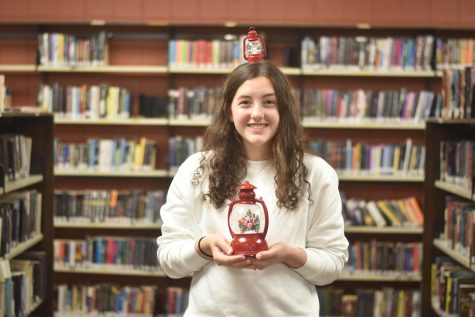
Hi Everyone! My name is Lauren Ritz and I'm a senior editor-in-chief for the Lantern. When I'm not editing articles and cooking up graphics, I enjoy playing...

